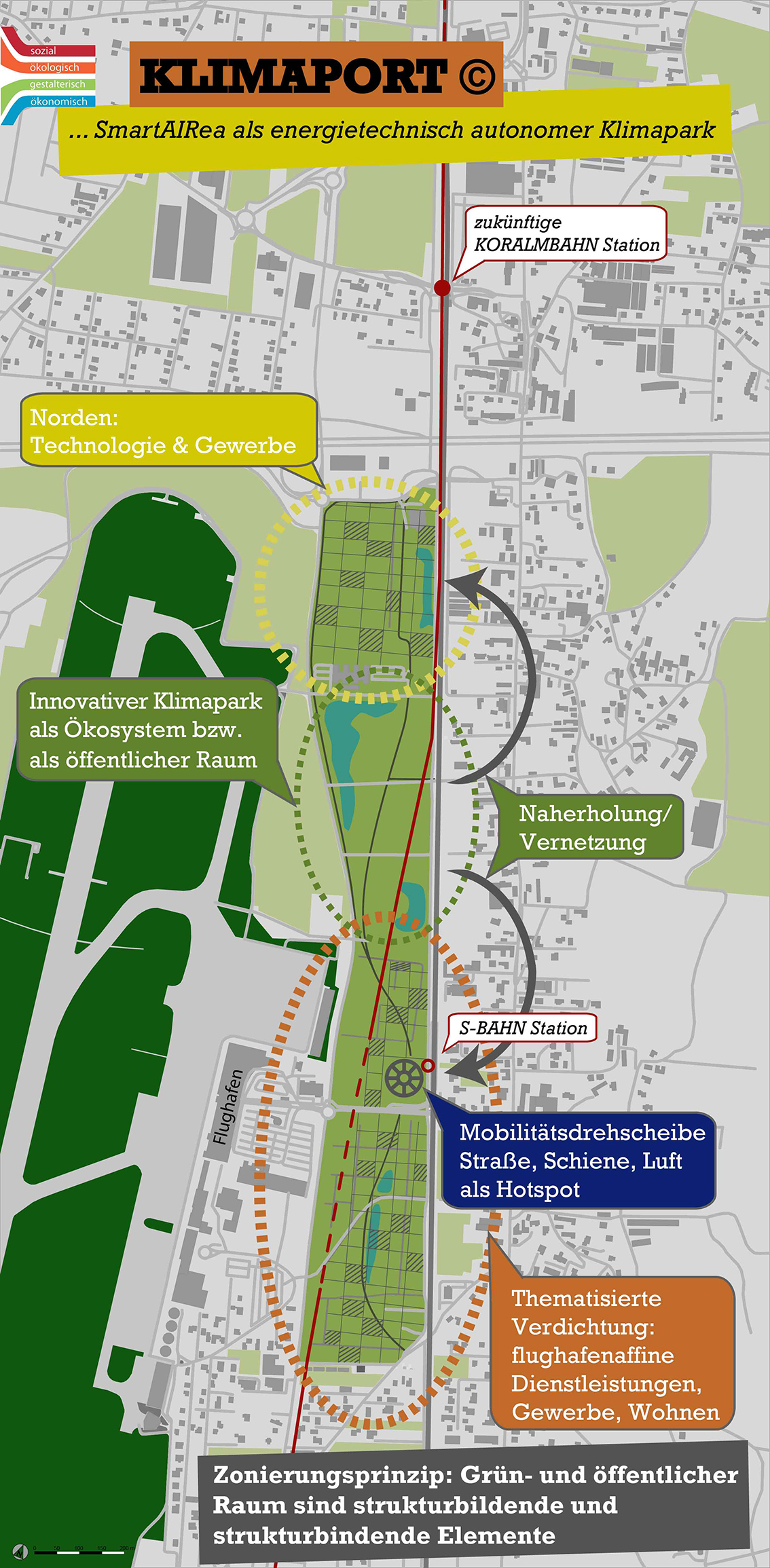All potentials created in and through the airport promote and ensure the prosperity of the airport, of the airport communities and the whole region.
The Graz Airport environment thus offers an ideal possibility to embed thematic principles of sustainable development such as building and spatial organisation, and energy supply, climate, mobility, quality of life, noise reduction, economic balance and good governance in the planning process and to test them out for the first time. The airport environment is thus transformed into a transparent, interconnected, controllable and resilient location – into SmartAIRea, where the term gestalt sustainability, which properly belongs to a people-oriented space, is at centre stage.
You have the possibility to view two alternative development options interactively:
Through its polycentric development, SmartAIRea is becoming an integrator, stabilizer and future model for the city, surrounding communities and urban regions in the sense of the production of a whole. The relationship Airport - Airport Environment is a stimulus for a new sustainable spatial development.

Area divided into three zones: technology, local recreation area (climate park as a buffer zone and connecting element) and thematic densification (housing, industry and services)
Ecological Sustainability: semi-autonomous energy systems from local, renewable energy sources such as solar energy are incorporated in roads and buildings and are used for mobility as well as for buildings (air conditioning). The buildings are supplied with heat energy through the usage of geothermal energy from the ground water. A Climate Park optimises greenhouse gas emissions and helps to avoid heat islands.
Economic Sustainability: stakeholders and the public draw profit and benefits from the spatial organisation and zone division.
Social Sustainability: formation of a middle size multimodal mobility hub which serves as a main pillar of the public space with a high quality of stay for pedestrians and cyclists – a shared space where industry, services and housing are located. Right after mobility the gestalt element of “green space” is the fundament and attractor for social interaction.
Gestalt Sustainability: spatial organisation, mono-functionality and green space enable the preservation, mediation and networking of the identity-endowing characteristics - the character of the place. Function as an intermediary between object and space. Recreation areas despite noise, traffic and industry.The onion-like interlaced use of industry, services and housing as an approach to create an interacting energetic, social and economic development of the airport environment.
Ecological Sustainability: spatial integration of the energy supply and the waste heat utilisation as a basic condition for a sustainable energy supply shared between neighbours in order to reduce greenhouse gas emissions. Depending on the subjective requirements of the premises a separate climate zone can be created within the onion-like structure (open atrium).
Economic Sustainability: spatial networking of the functions as a condition for short and long-term economic requirements as well as the willingness to save energy and fair distribution.
Social Sustainability: smart living and working by sharing: efficient connections, short distances between work space and living space reduce the number of commuters and thus enable the growth of green space and meeting zones. In addition, the logistic systems also support the public space and social connections.
Gestalt Sustainability: the onion-like building typology allows the individual blocks to adapt (number and size) to the structural as well as the usage requirements. More specifically it allows the flow between content and form beyond functional necessities.